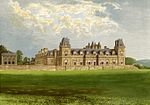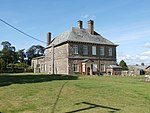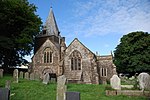Parish church of St Giles, St Giles in the Wood
Grade II listed churches in DevonTagged pages containing blacklisted links

The large parish church of St Giles, which is in the village of St Giles in the Wood, Devon, England, came into being in 1309. When it was restored in 1862–3, many monuments were retained, including the monument and effigy of Thomas Chafe (d. 1648) of Dodscott, three monumental brasses, of Alenora Pollard (d. 1430), Margaret Rolle of Stevenstone (d. 1592) and a small brass of her husband John Rolle (d.1570). There are also 19th- and 20th-century monuments to the Rolle family.
Excerpt from the Wikipedia article Parish church of St Giles, St Giles in the Wood (License: CC BY-SA 3.0, Authors, Images).Parish church of St Giles, St Giles in the Wood
Sunnyside, Torridge District
Geographical coordinates (GPS) Address Nearby Places Show on map
Geographical coordinates (GPS)
| Latitude | Longitude |
|---|---|
| N 50.95135 ° | E -4.08962 ° |
Address
Sunnyside
EX38 7JH Torridge District
England, United Kingdom
Open on Google Maps








